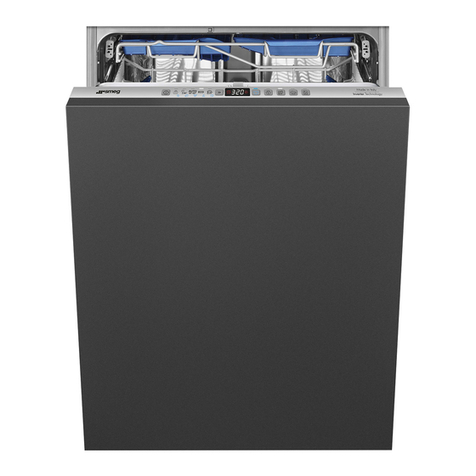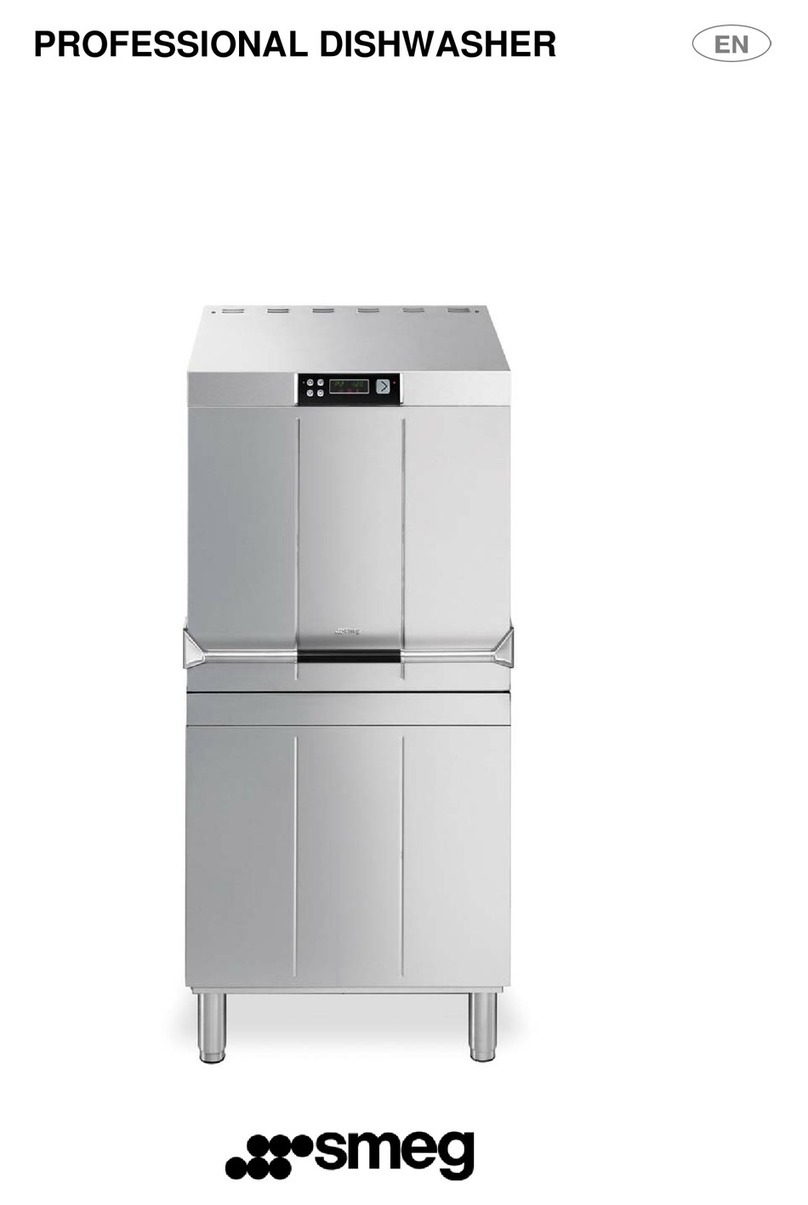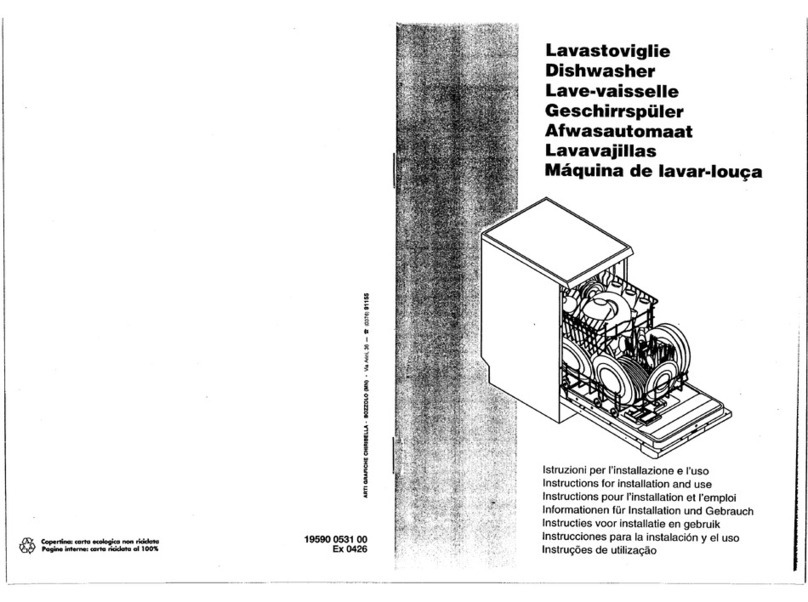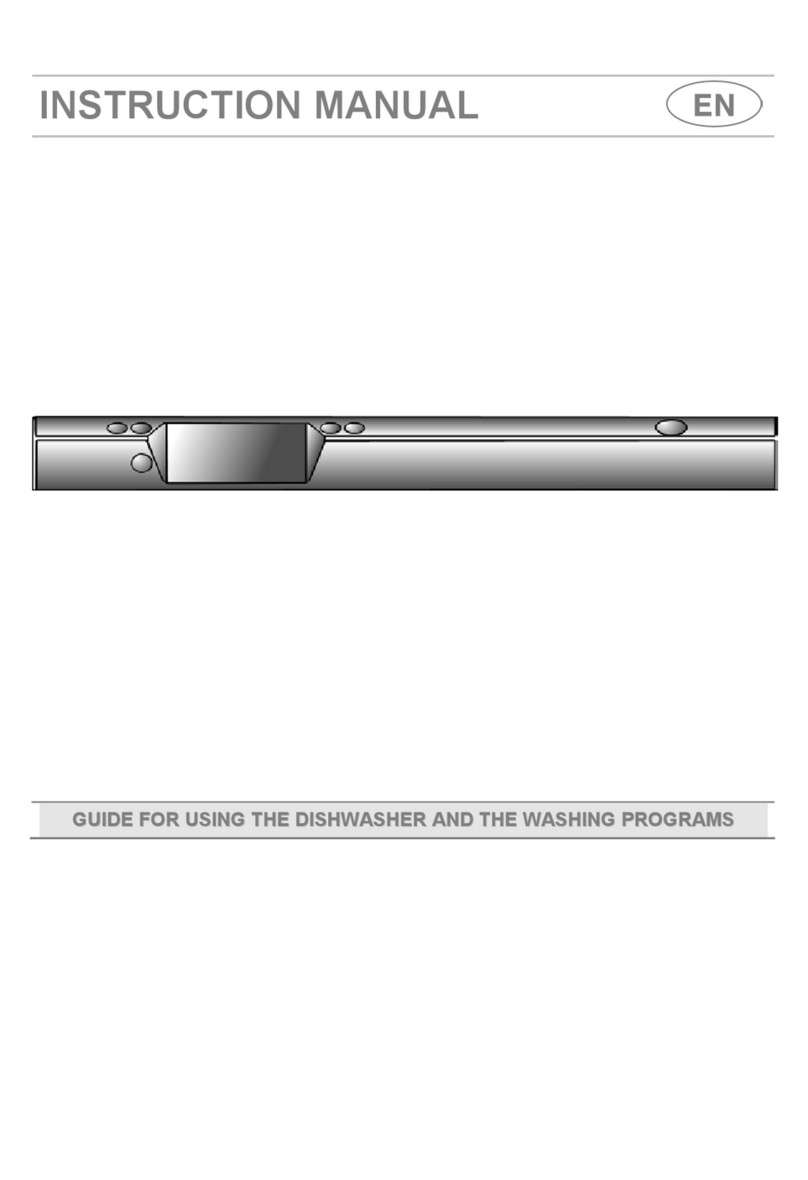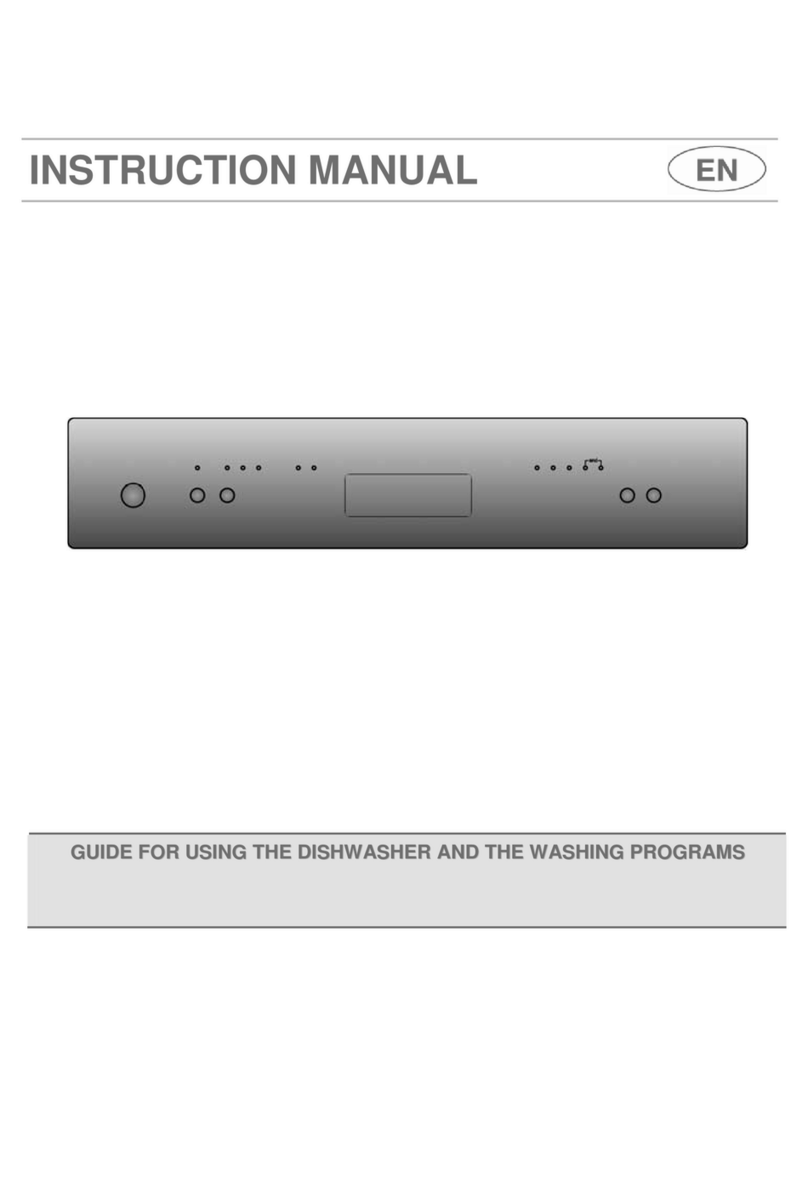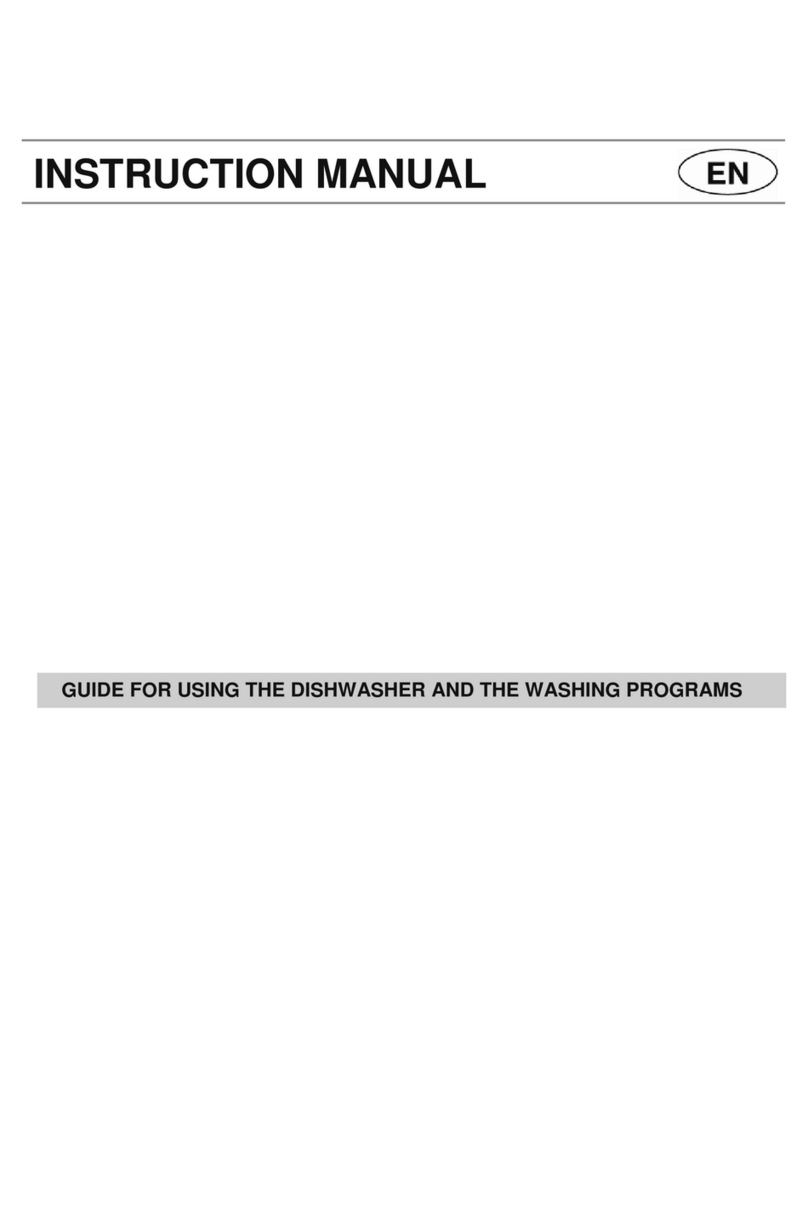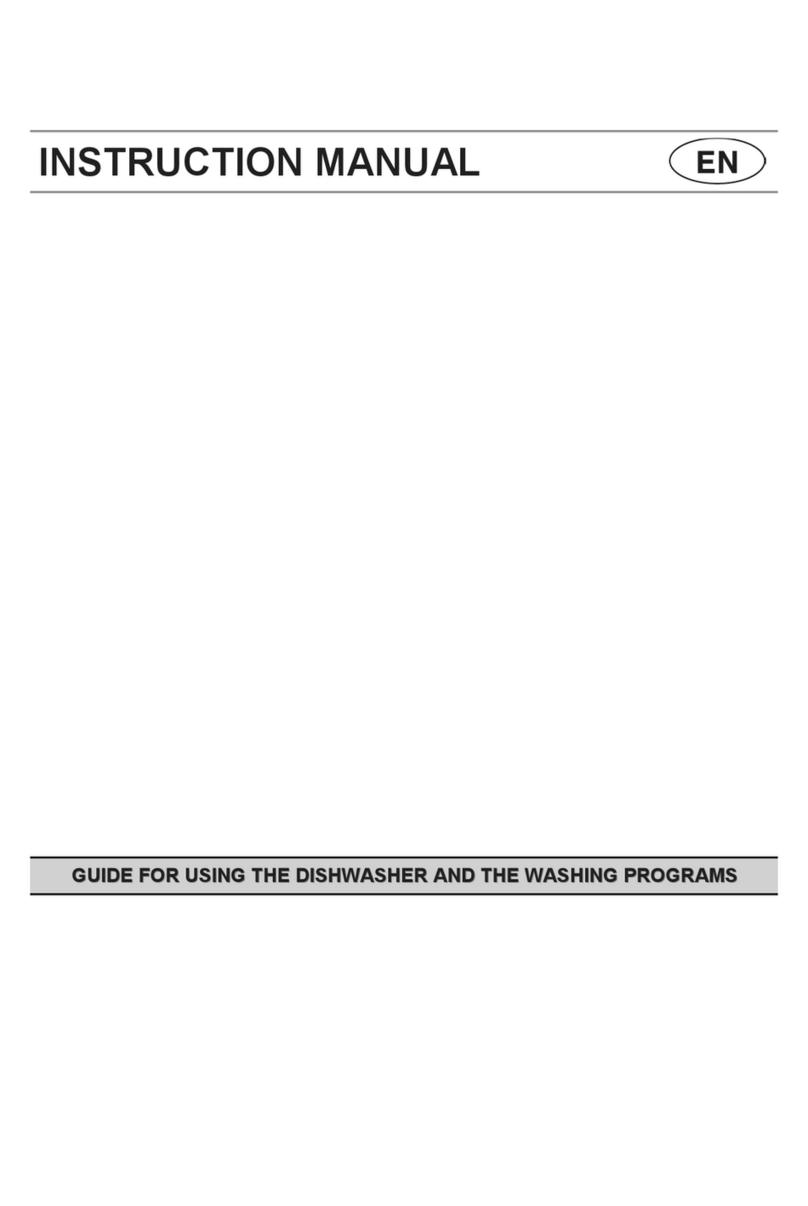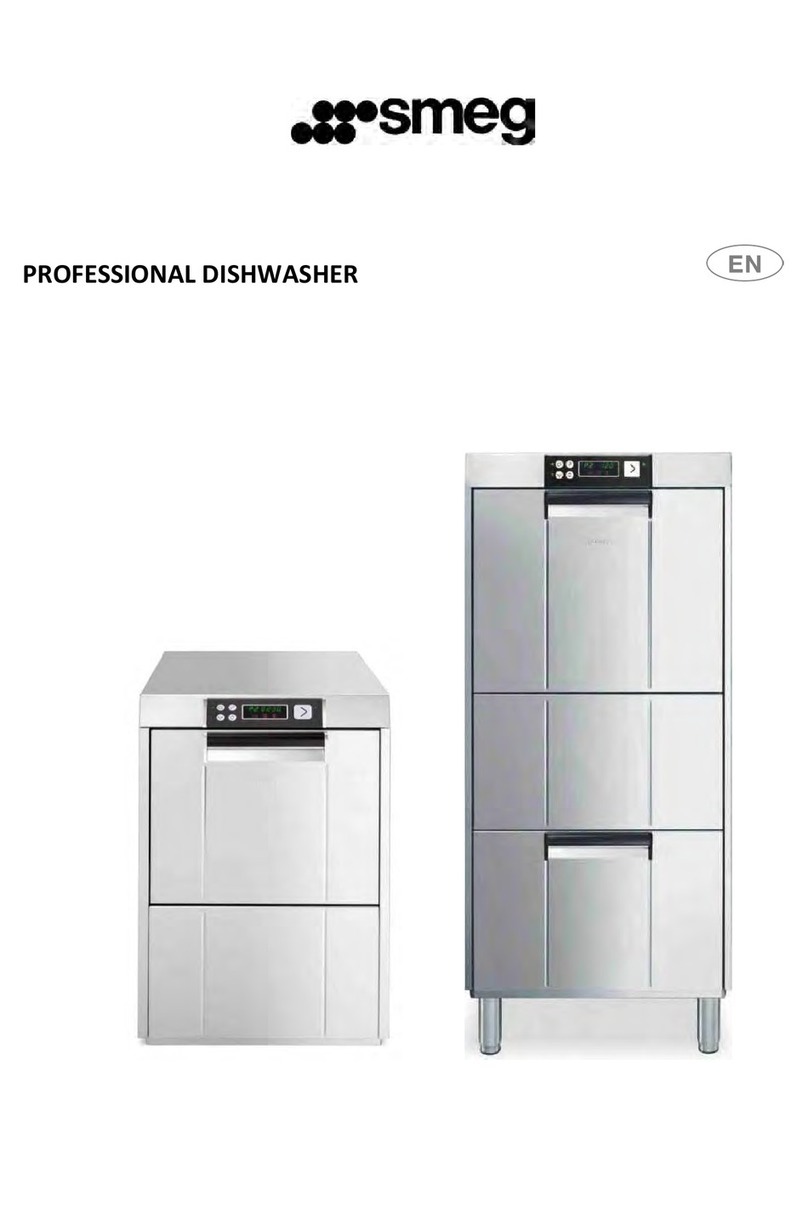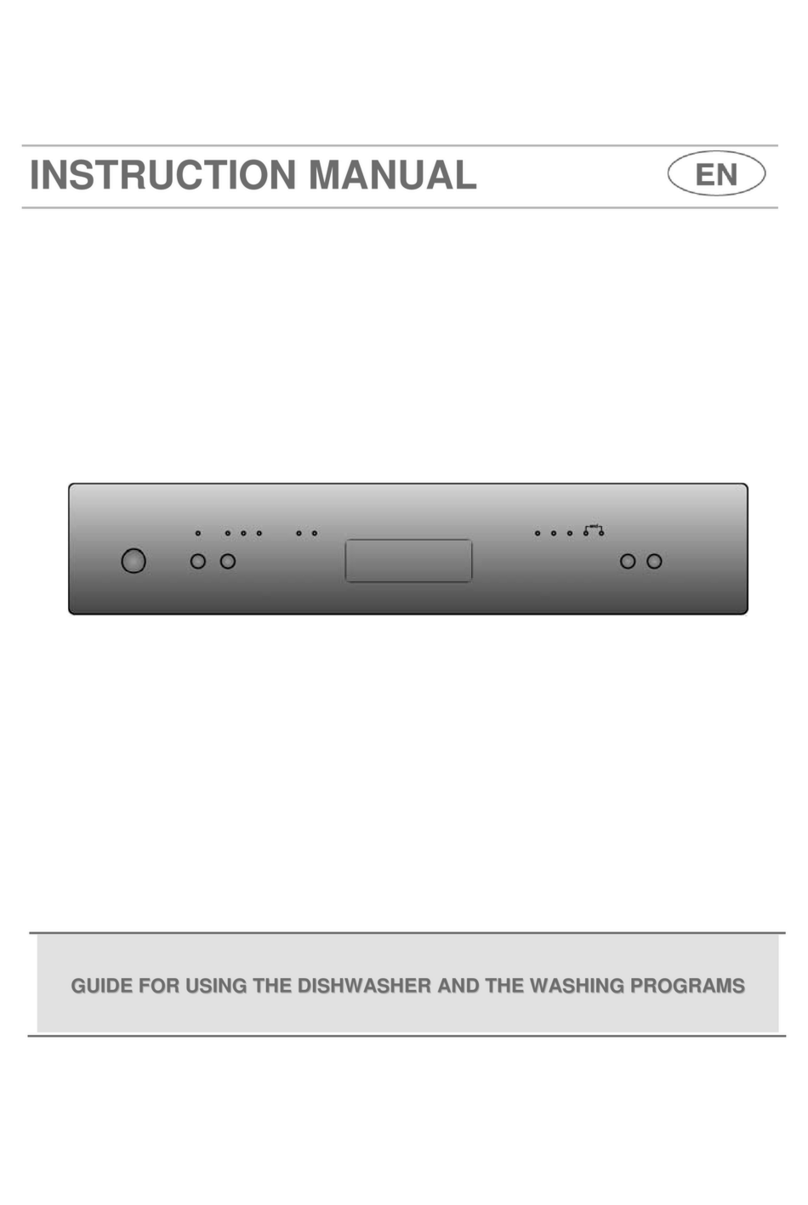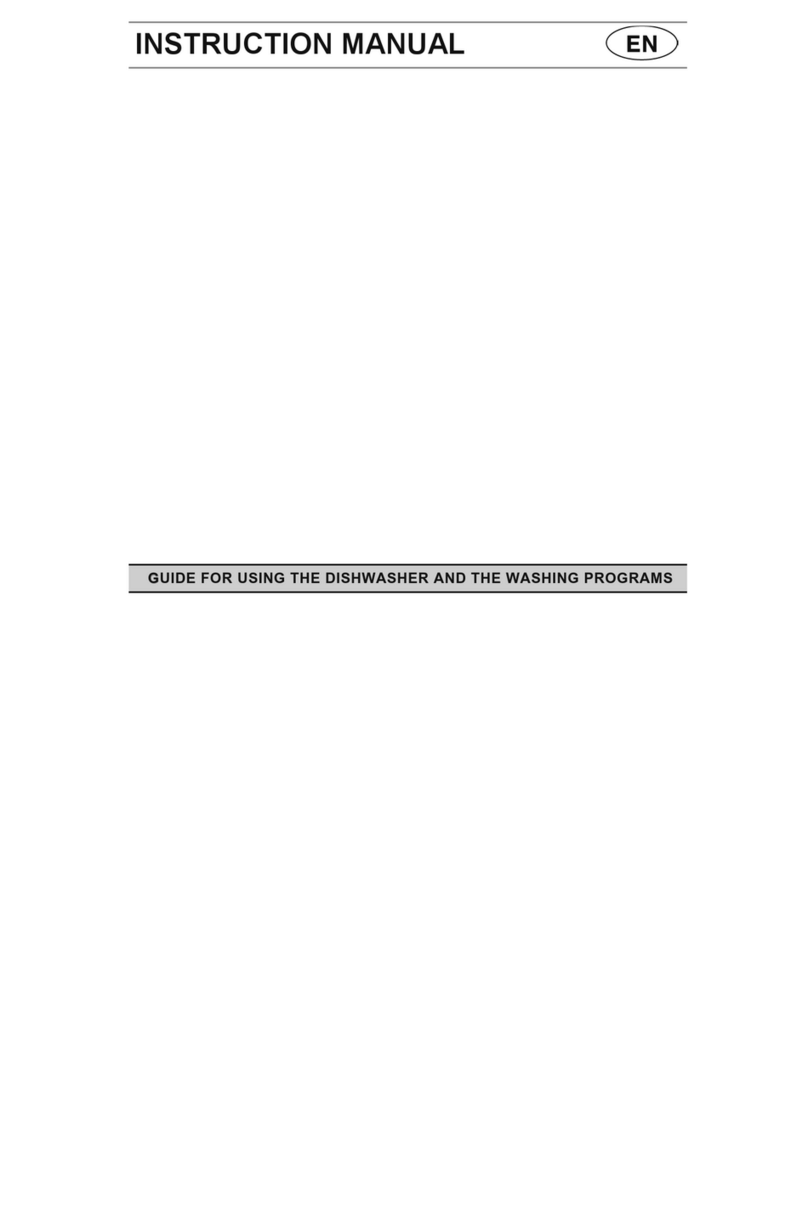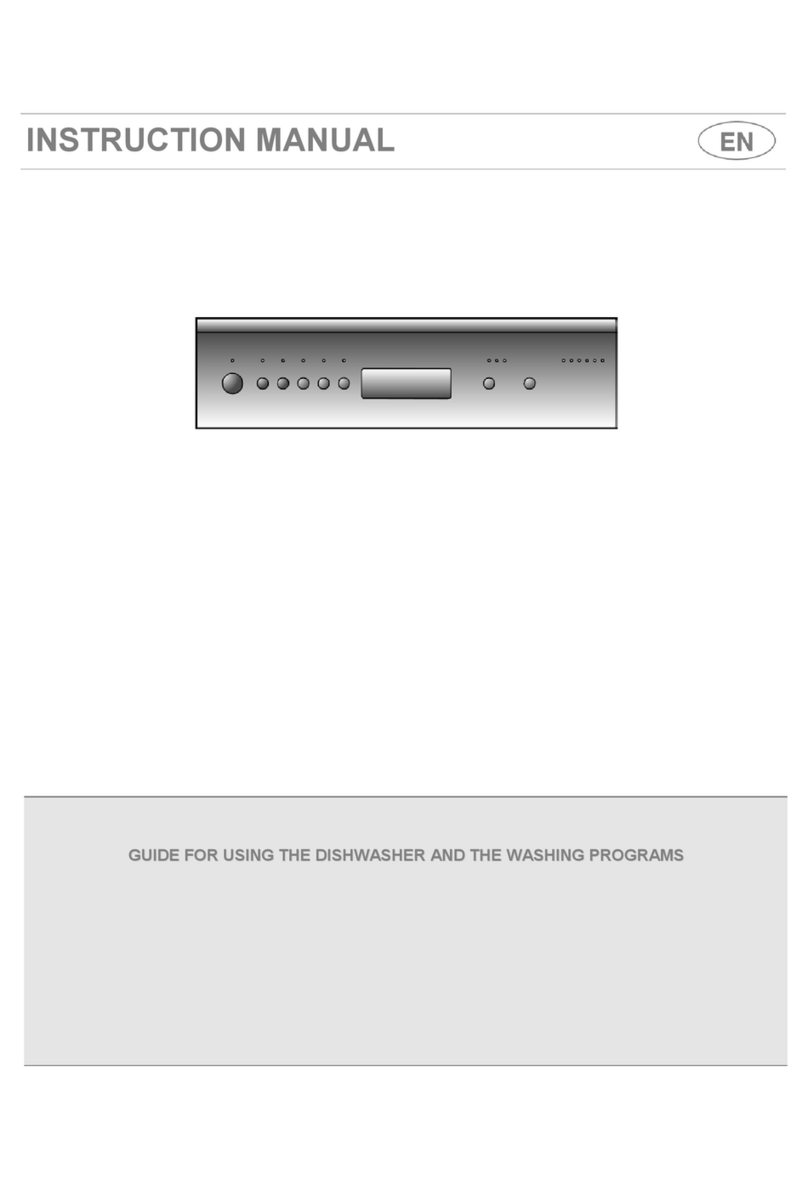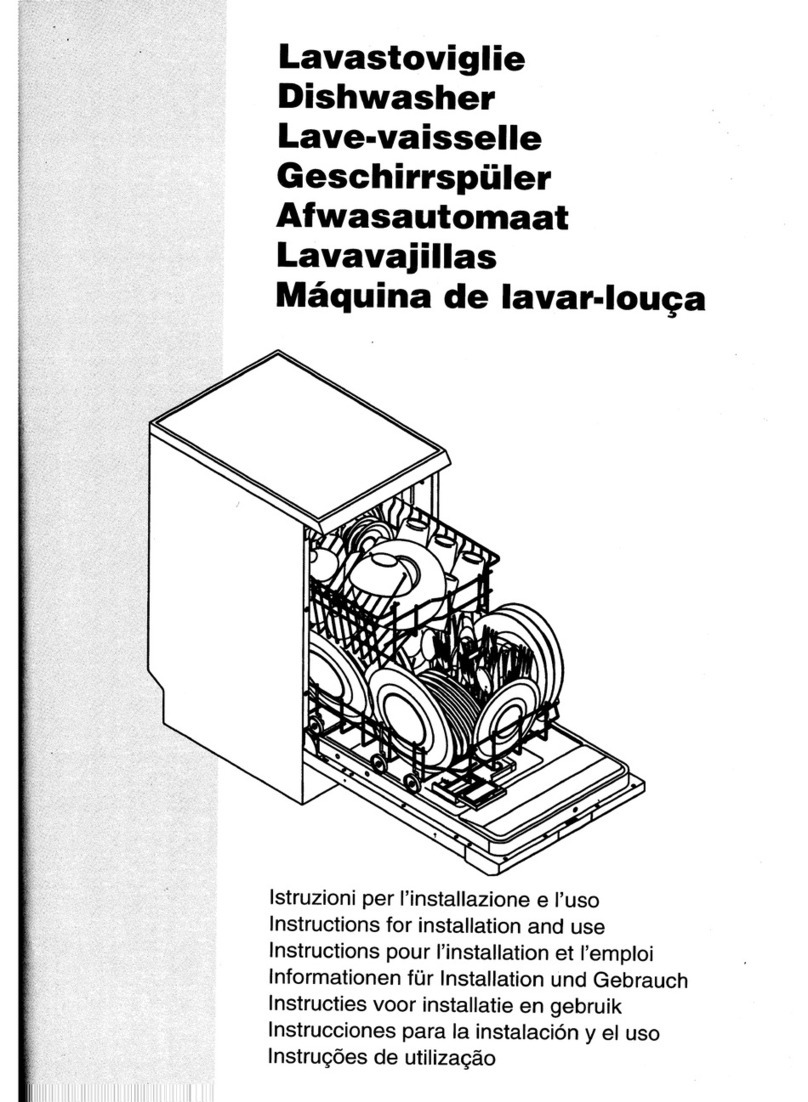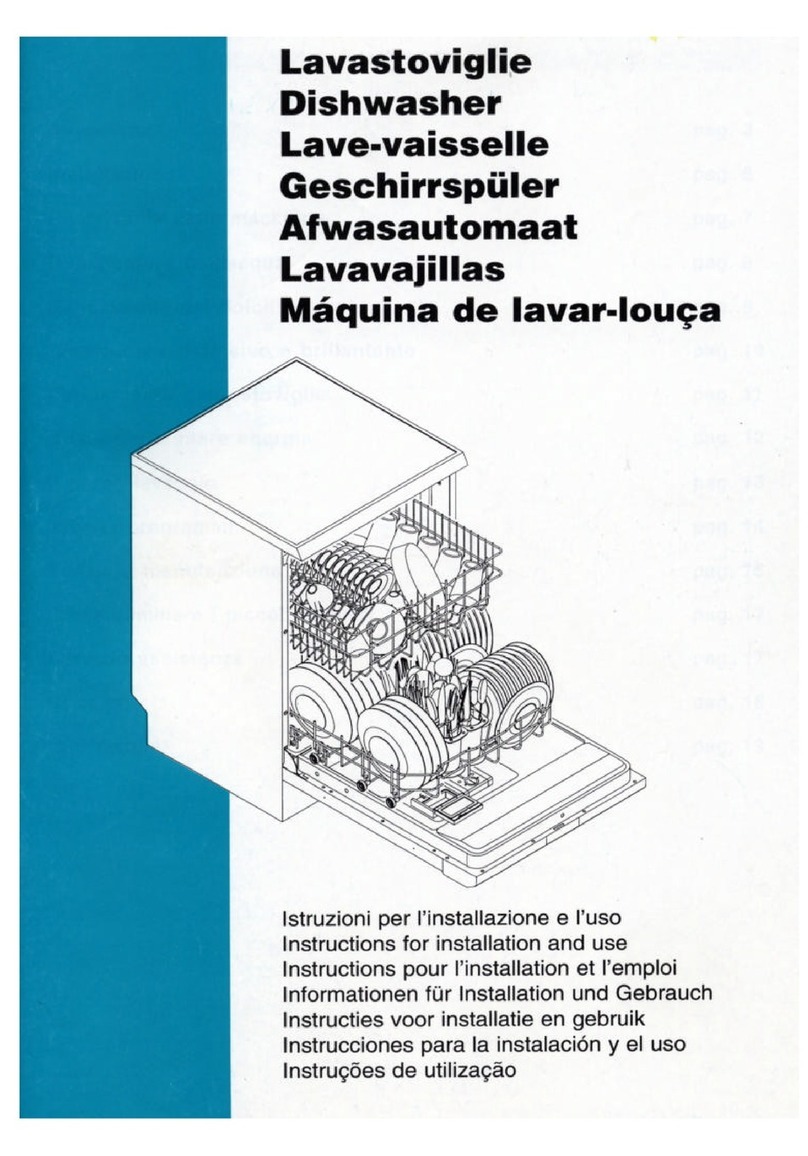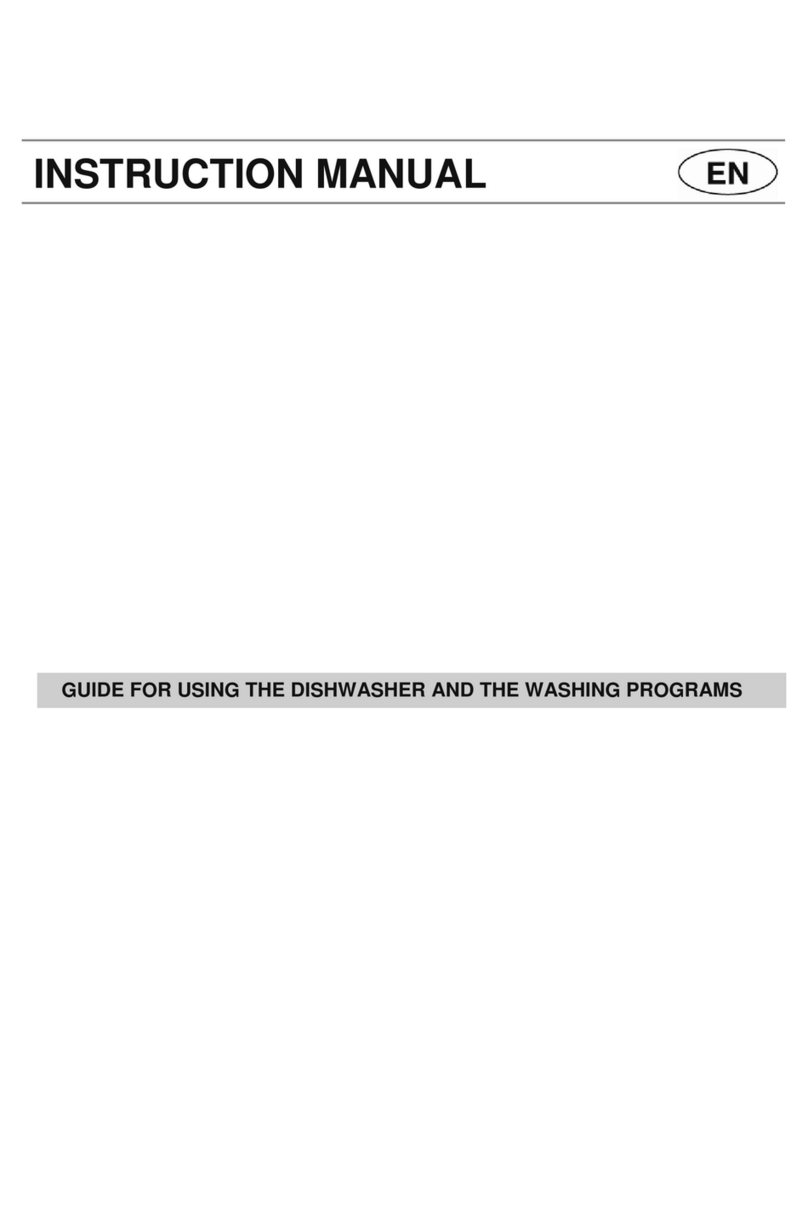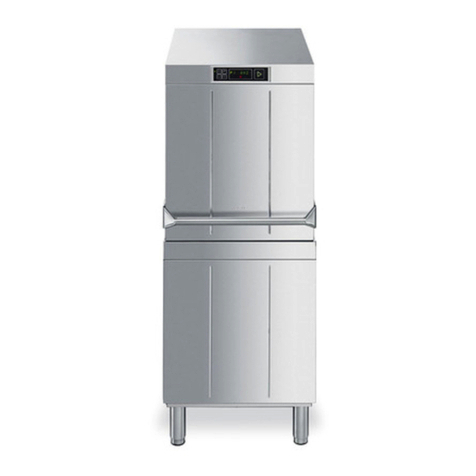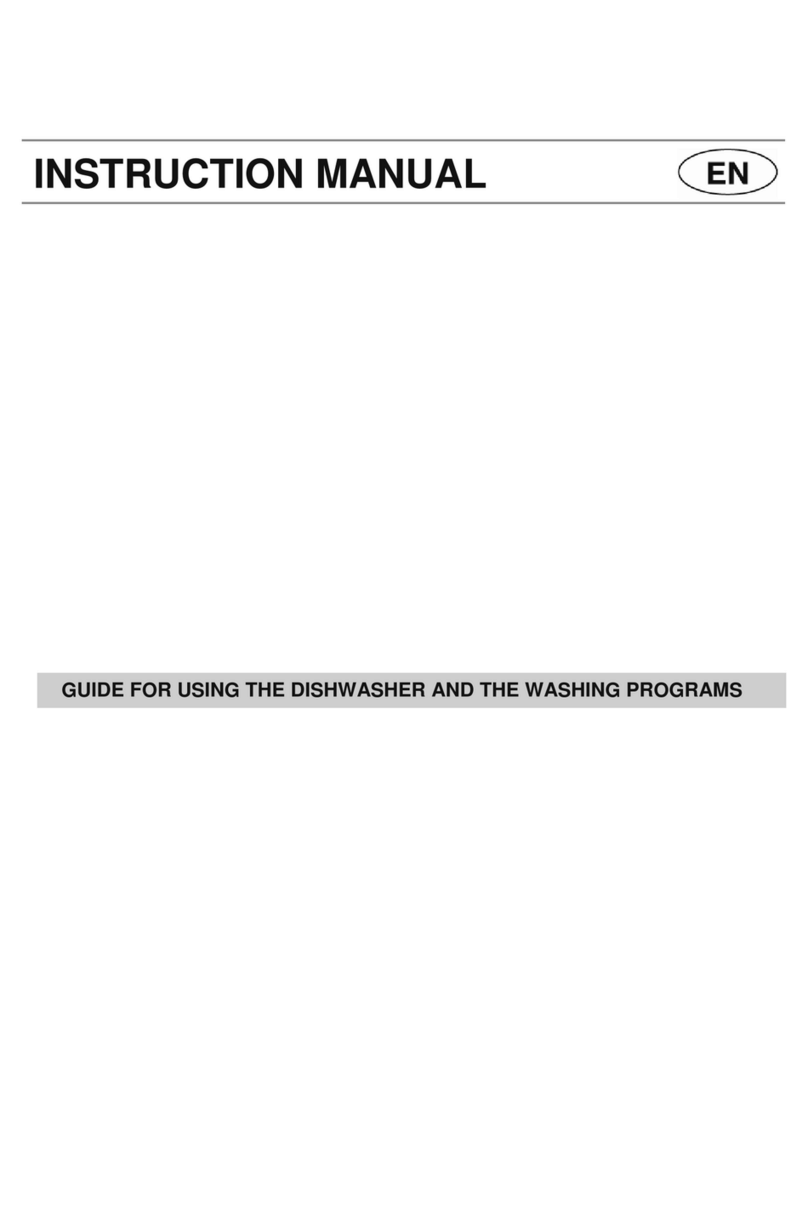
Installation
10
Building-in a dishwasher underneath a hob is absolutely forbidden.
Moreover, dishwashers may not be installed directly touching appliances
which are not conventional built-in kitchen appliances (e.g. fireplaces,
stoves, etc.).
When installing the dishwasher in a compartment next to one or more other
appliances, it is essential to comply with all the recommendations provided by
the appliance’s manufacturer (minimum distances, installation procedures,
etc.).
For free-standing models only
- Installing a hob on top of a free-standing dishwasher is absolutely
forbidden.
- If the appliance is accessible from one side, the door hinge area has to be
covered for safety reasons (risk of injury). The covers are available as an
accessory and can be ordered through the Technical Assistance Service.
- The top surface of the dishwashers can be removed to
allow installation under a worktop. The
appropriate kit should be purchased from authorised dealers or via the
Technical Assistance Service. This must be carried out by authorised
personnel.
2.3 Water supply connection
CONNECTING TO THE WATER SUPPLY
Connect the intake hose to a cold water supply with ¾” gas
thread, inserting the filter A supplied with the dishwasher.
Take care to screw the hose firmly into place with your
hands and then complete by tightening about ¼ of a turn
with pliers.
In dishwashers equipped with the AQUASTOP device,
the filters is already fitted inside the threaded ring.
The dishwasher can also be connected to a hot water supply not exceeding
60°C. Supplying the appliance with hot water cuts down the washing time be
approximately 20 minutes, but slightly reduces its effectiveness. Make the
connection to the domestic hot water supply using the same procedure
described for connecting to the cold water supply.

